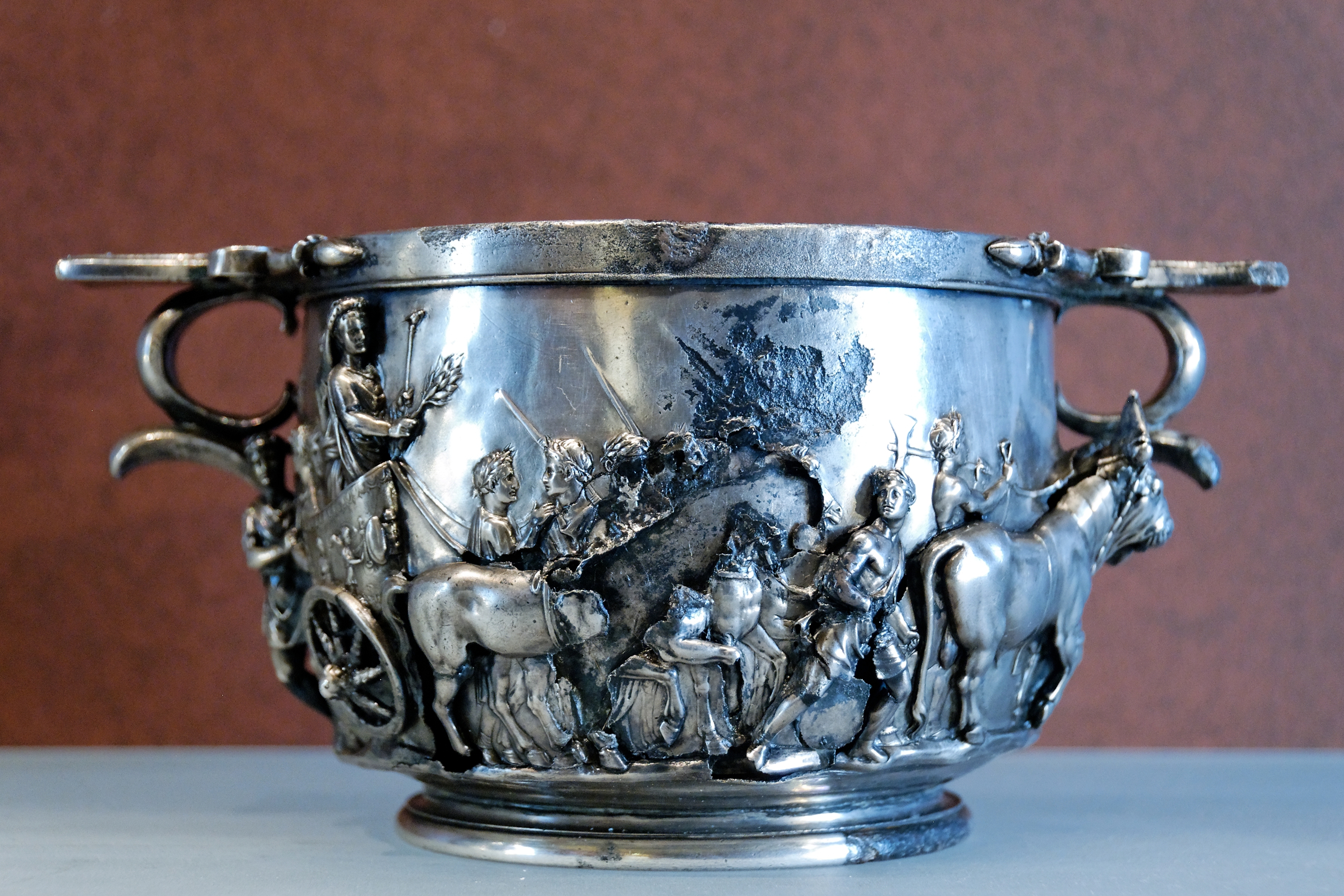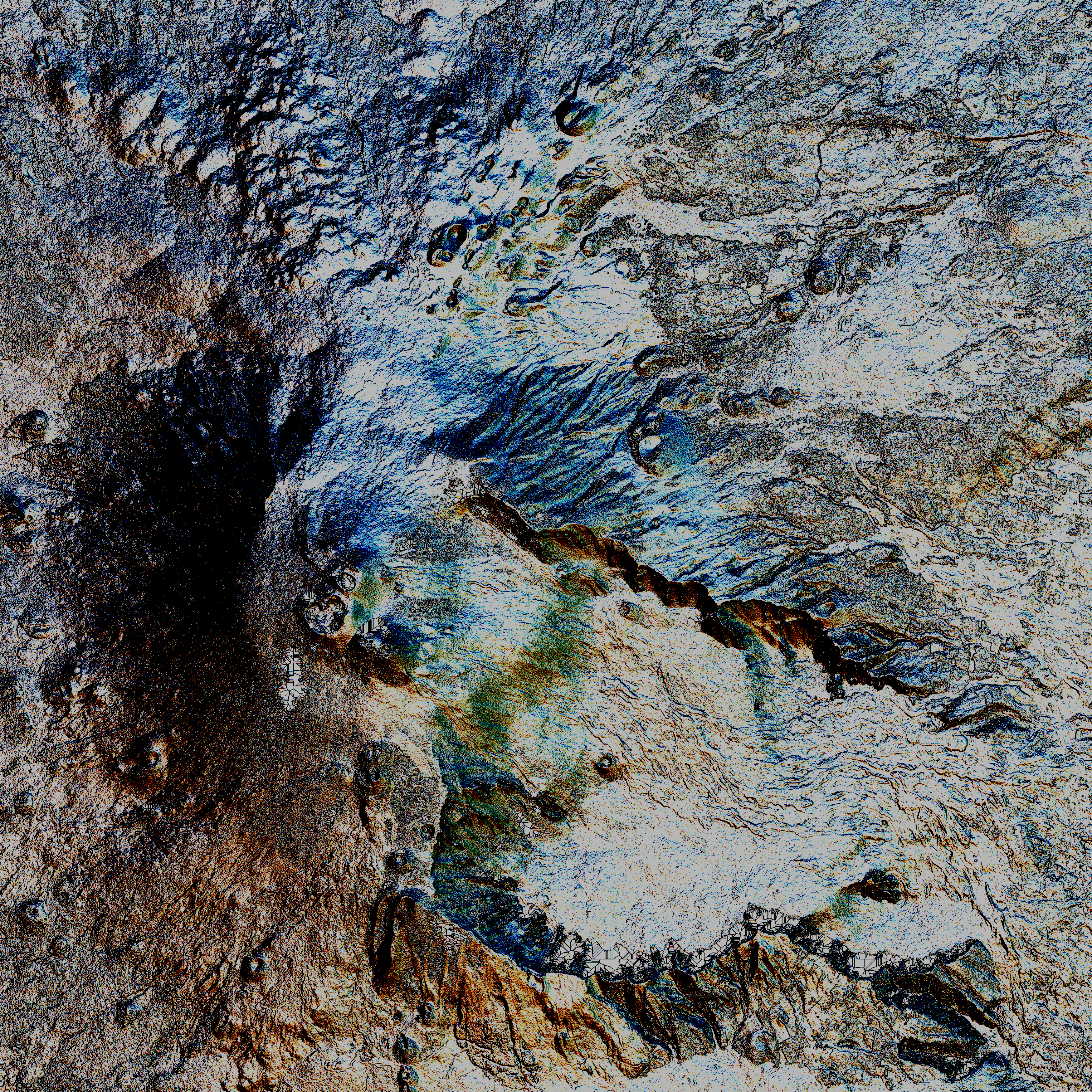|
Sicilian Vase Painting
Sicilian vase painting was a regional style of South Italian red-figure vase painting. It was one of five South Italian regional styles. The vase painting of Sicily was especially closely connected with the Lucanian and Paestan styles. Overview The beginnings of Sicilian vase painting remain mysterious. Production began before the end of the 5th century BC in the cities of Himera and Syracusae. In terms of style, themes, ornamentation and vase shapes, the workshops closely followed Attic examples. The influence of the Attic Late Classical Medias Painter is especially striking. It is possible that the first potters and painters were Athenian prisoners of war (see Sicilian Expedition). The Chessboard Painter, one of the first Sicilian vase painters, had apparently been trained by the Attic Pothos Painter. His pupil, the Dirke Painter, established the typical Sicilian technique. In the second quarter of the 4th century BC, potters who had emigrated from Sicily to Capua and Cum ... [...More Info...] [...Related Items...] OR: [Wikipedia] [Google] [Baidu] |
Cumae
Cumae ( grc, Κύμη, (Kumē) or or ; it, Cuma) was the first ancient Greek colony on the mainland of Italy, founded by settlers from Euboea in the 8th century BC and soon becoming one of the strongest colonies. It later became a rich Roman city, the remains of which lie near the modern village of Cuma, a ''frazione'' of the ''comune'' Bacoli and Pozzuoli in the Metropolitan City of Naples, Campania, Italy. The archaeological museum of the Campi Flegrei in the Aragonese castle contains many finds from Cumae. History Early The oldest archaeological finds by Emil Stevens in 1896 date to 900–850 BCE and more recent excavations have revealed a Bronze Age settlement of the ‘pit-culture’ people, and later dwellings of Iron Age Italic people, Italic peoples whom the Greeks referred to by the names Ausones and Opici (whose land was called :it:Opicia, Opicia). The Greek settlement was founded in the 8th century BCE by emigrants from cities of Eretria and Chal ... [...More Info...] [...Related Items...] OR: [Wikipedia] [Google] [Baidu] |
Skyphos
A ''skyphos'' ( grc, σκύφος; plural ''skyphoi'') is a two-handled deep wine-cup on a low flanged base or none. The handles may be horizontal ear-shaped thumbholds that project from the rim (in both Corinthian and Athenian shapes), or they may be loop handles at the rim or that stand away from the lower part of the body. ''Skyphoi'' of the type called '' glaux'' (owl) have one horizontal and one vertical thumbhold handle. Examples Early ''skyphoi'' were made during the Geometric period. Corinth set the conventions that Athens followed. Over a long period the shape remained the same while the style of decoration changed. ''Skyphoi'' were also made of precious metals, generally silver and gold leaf, many examples exist. One possible, well-preserved example is the Warren cup,In his notes, John Pollini states that uncertainty about the correct name of many ancient drinking vessels exists, however he refers to the object with the "established classificatory term scyphus", Specif ... [...More Info...] [...Related Items...] OR: [Wikipedia] [Google] [Baidu] |
Lekythos
A lekythos (plural lekythoi) is a type of ancient Greek vessel used for storing oil (Greek λήκυθος), especially olive oil. It has a narrow body and one handle attached to the neck of the vessel, and is thus a narrow type of jug, with no pouring lip; the oinochoe is more like a modern jug. In the "shoulder" and "cylindrical" types which became the most common, especially the latter, the sides of the body are usually vertical by the shoulder, and there is then a sharp change of direction as the neck curves in; the base and lip are normally prominent and flared. However, there are a number of varieties, and the word seems to have been used even more widely in ancient times than by modern archeologists. They are normally in pottery, but there are also carved stone examples. Lekythoi were especially associated with funerary rites, and with the white ground technique of vase painting, which was too fragile for most items in regular use. Because of their handle they were norma ... [...More Info...] [...Related Items...] OR: [Wikipedia] [Google] [Baidu] |
Hydria
The hydria ( el, ὑδρία; plural hydriai) is a form of Greek pottery from between the late Geometric period (7th century BC) and the Hellenistic period (3rd century BC). The etymology of the word hydria was first noted when it was stamped on a hydria itself, its direct translation meaning ‘jug’. It is a type of water-carrying vessel, but it had many other purposes. As time progressed the hydria developed into many forms, some of which were smaller or of a different material. These variants were decorated with detailed figures to represent Greek mythological stories, as well as scenes of daily life, providing extensive insight into Ancient Greek culture and society. Function Originally, the hydria's purpose was for the collection of water, but it also held oil and the votes of judges. The design of the hydria allowed for the efficient collecting and pouring of liquids as it possessed three handles: two horizontal ones at its sides and a vertical one on its back. The sha ... [...More Info...] [...Related Items...] OR: [Wikipedia] [Google] [Baidu] |
Volute Krater
A krater or crater ( grc-gre, , ''kratēr'', literally "mixing vessel") was a large two-handled shape of vase in Ancient Greek pottery and metalwork, mostly used for the mixing of wine with water. Form and function At a Greek symposium, kraters were placed in the center of the room. They were quite large, so they were not easily portable when filled. Thus, the wine-water mixture would be withdrawn from the krater with other vessels, such as a ''kyathos'' (pl. ''kyathoi''), an ''amphora'' (pl. ''amphorai''), or a ''kylix'' (pl. ''kylikes''). In fact, Homer's ''Odyssey'' describes a steward drawing wine from a krater at a banquet and then running to and fro pouring the wine into guests' drinking cups. The modern Greek word now used for undiluted wine, ''krasi'' ( κρασί), originates from the ''krasis'' (''κράσις'', i.e., mixing) of wine and water in kraters. Pottery kraters were glazed on the interior to make the surface of the clay more impervious for holding wate ... [...More Info...] [...Related Items...] OR: [Wikipedia] [Google] [Baidu] |
Chalice Krater
A chalice (from Latin 'mug', borrowed from Ancient Greek () 'cup') or goblet is a footed cup intended to hold a drink. In religious practice, a chalice is often used for drinking during a ceremony or may carry a certain symbolic meaning. Religious use Christian The ancient Roman ''calix'' was a drinking vessel consisting of a bowl fixed atop a stand, and was in common use at banquets. In Roman Catholicism, Eastern Orthodox Church, Oriental Orthodoxy, Anglicanism, Lutheranism and some other Christian denominations, a chalice is a standing cup used to hold sacramental wine during the Eucharist (also called the Lord's Supper or Holy Communion). Chalices are often made of precious metal, and they are sometimes richly enamelled and jewelled. The gold goblet was symbolic for family and tradition. Chalices have been used since the early church. Because of Jesus' command to his disciples to "Do this in remembrance of me." (), and Paul's account of the Eucharistic rite in , t ... [...More Info...] [...Related Items...] OR: [Wikipedia] [Google] [Baidu] |
Lipari
Lipari (; scn, Lìpari) is the largest of the Aeolian Islands in the Tyrrhenian Sea off the northern coast of Sicily, southern Italy; it is also the name of the island's main town and ''comune'', which is administratively part of the Metropolitan City of Messina. Its population is 12,821, but during the May to September tourist season, the total population may reach up to 20,000. Geography Lipari is the largest of a chain of islands in a volcanic archipelago situated in between Vesuvius and Etna. The island has a surface area of 37.6 km2 and is 30 km from Sicily. Besides the main town, most of the year-round population resides in one of the four main villages: Pianoconte is almost due west across the island, Quattropani in the northwest, Acquacalda along the northern coast, whereas Canneto is on the eastern shore north of Lipari town. The highest point on the island is Monte Chirica at 602 m (1975 ft). Geology Geologists agree on the fact that Lipari was created by a suc ... [...More Info...] [...Related Items...] OR: [Wikipedia] [Google] [Baidu] |
Mount Etna
Mount Etna, or simply Etna ( it, Etna or ; scn, Muncibbeḍḍu or ; la, Aetna; grc, Αἴτνα and ), is an active stratovolcano on the east coast of Sicily, Italy, in the Metropolitan City of Catania, between the cities of Messina and Catania. It lies above the convergent plate margin between the African Plate and the Eurasian Plate. It is one of the tallest active volcanoes in Europe, and the tallest peak in Italy south of the Alps with a current height (July 2021) of , though this varies with summit eruptions. Over a six-month period in 2021, Etna erupted so much volcanic material that its height increased by approximately , and the southeastern crater is now the tallest part of the volcano. Etna covers an area of with a basal circumference of . This makes it by far the largest of the three active volcanoes in Italy, being about two and a half times the height of the next largest, Mount Vesuvius. Only Mount Teide on Tenerife in the Canary Islands surpasses it in ... [...More Info...] [...Related Items...] OR: [Wikipedia] [Google] [Baidu] |
Gela
Gela (Sicilian and ; grc, Γέλα) is a city and (municipality) in the Autonomous Region of Sicily, Italy; in terms of area and population, it is the largest municipality on the southern coast of Sicily. Gela is part of the Province of Caltanissetta and is the only in Italy with a population and area that exceed those of the provincial capital. Gela was founded in 698 BC by Greek colonists from Rhodes and Crete; it was an influential ''polis'' in Sicily in the 7th and 6th centuries BC and became one of the most powerful cities until the 5th c. BC. Aeschylus, the famous playwright, lived here and died in 456 BC. In 1943, during the Invasion of Sicily, the Allied forces made their first landing on the island at Gela.La Monte, John L. & Lewis, Winston B. ''The Sicilian Campaign, 10 July17 August 1943'' (1993) United States Government Printing Office pp.56-96 History Ancient era Archaeology has shown that the acropolis of Gela was occupied during the Copper Age in ... [...More Info...] [...Related Items...] OR: [Wikipedia] [Google] [Baidu] |







